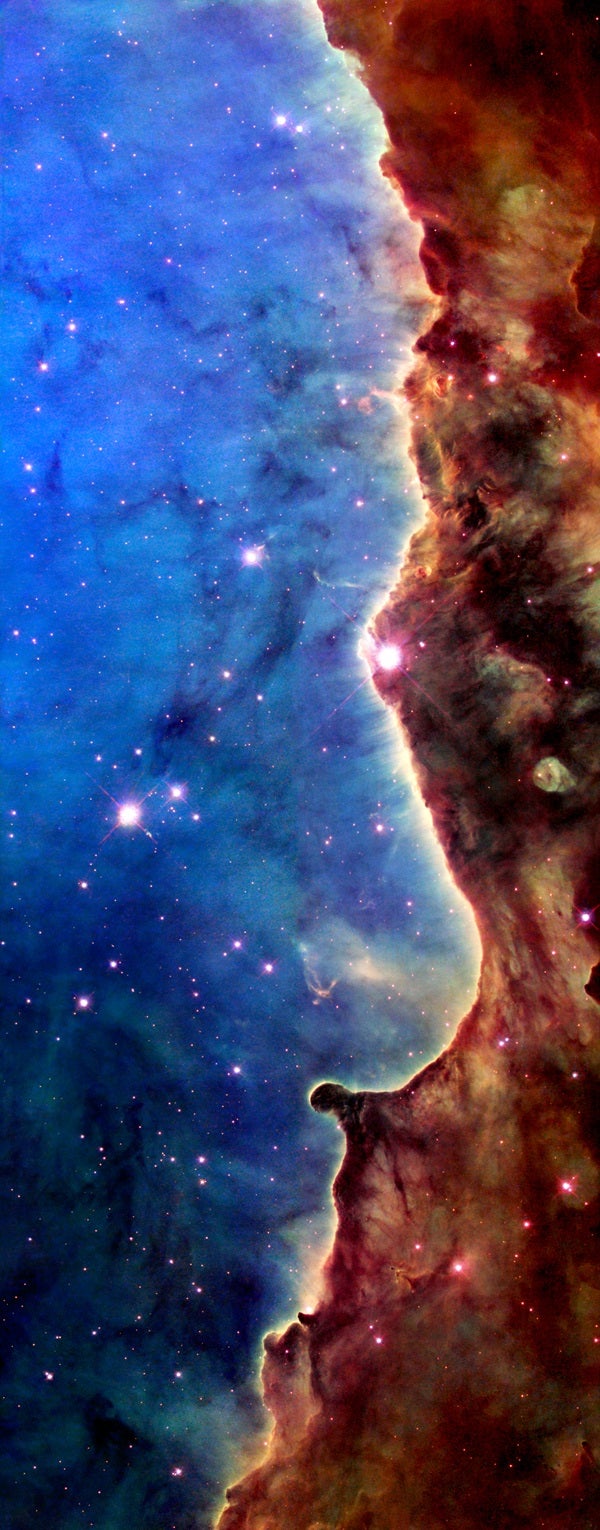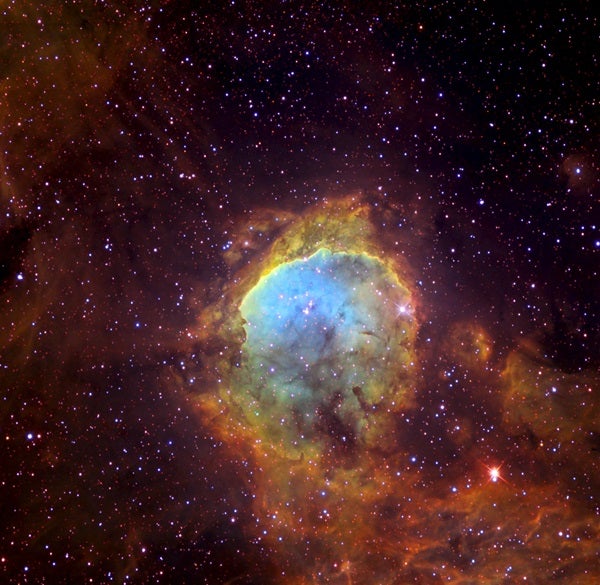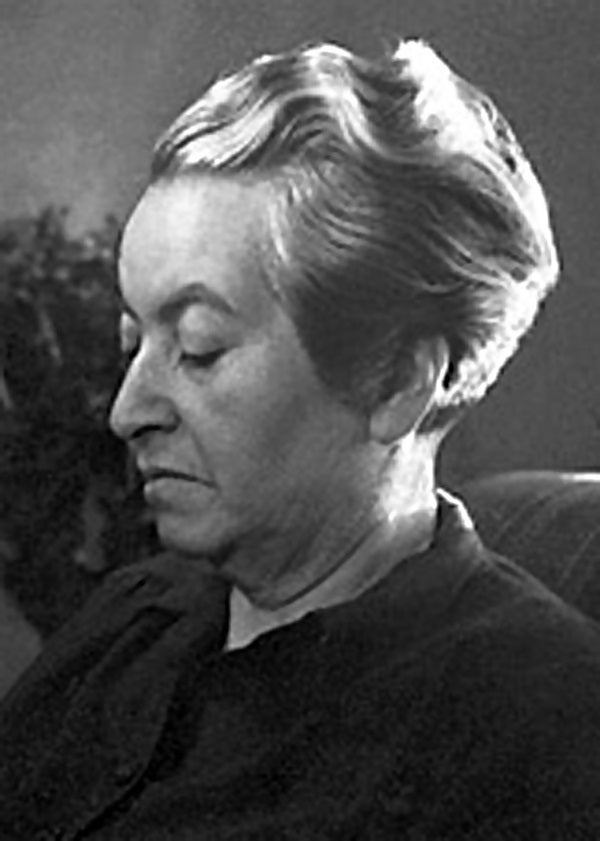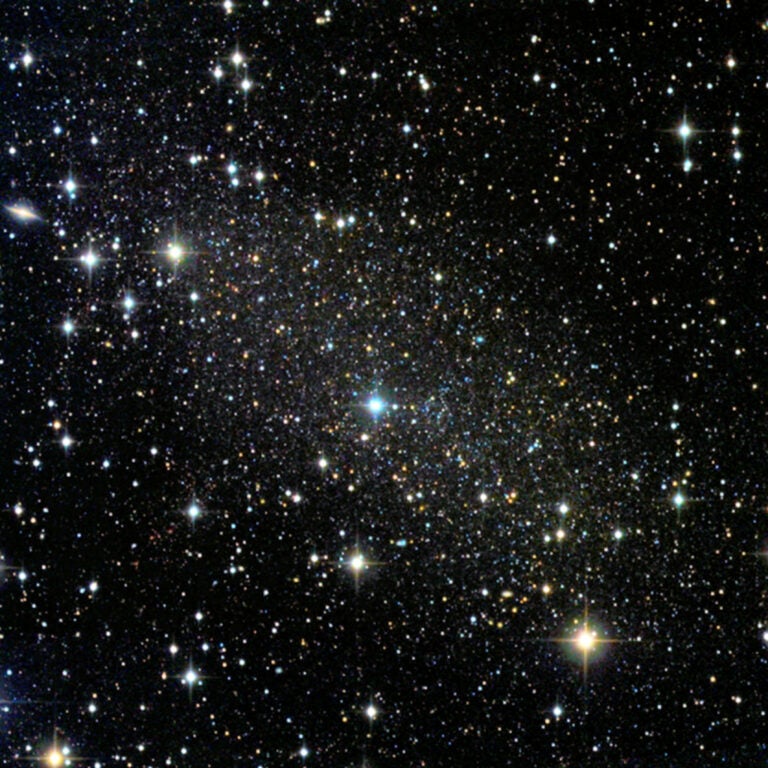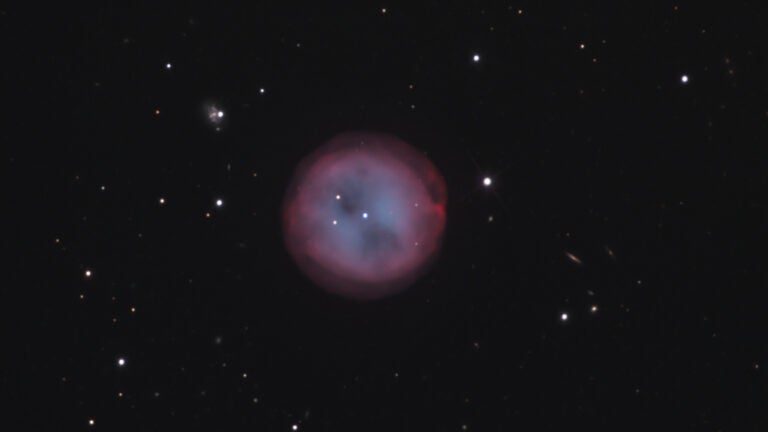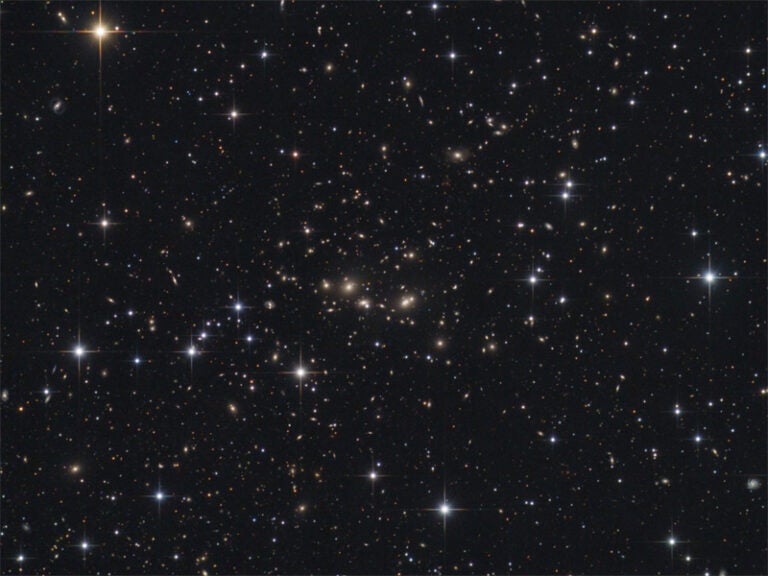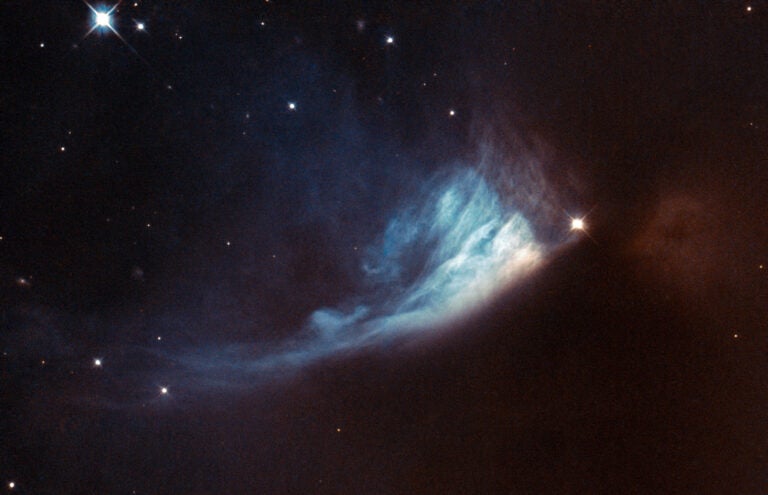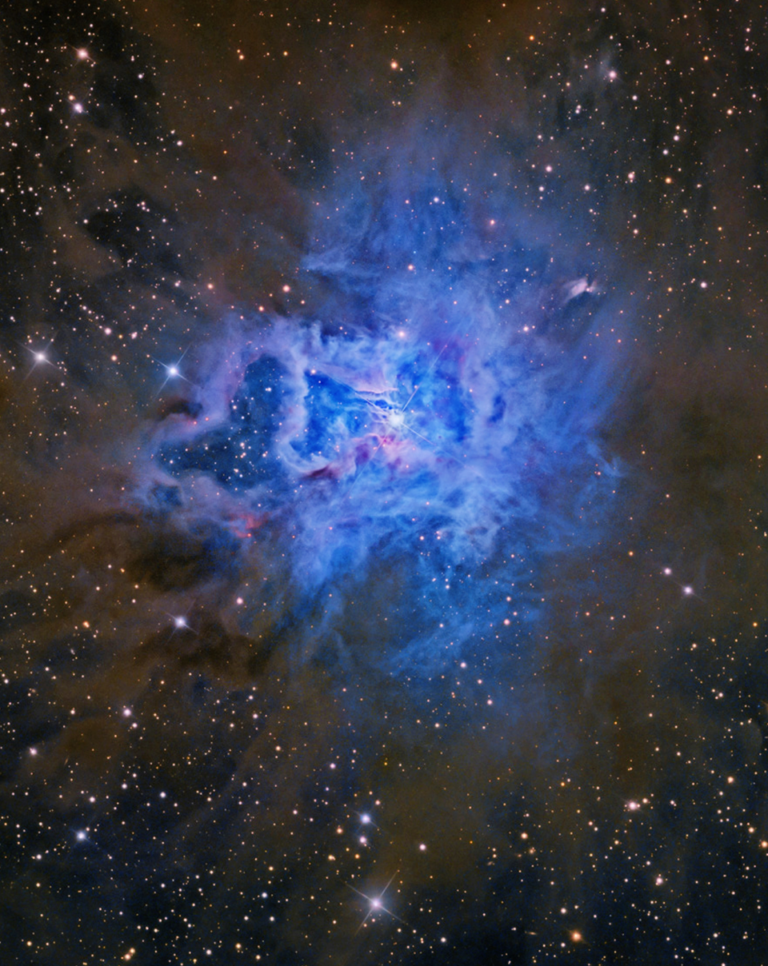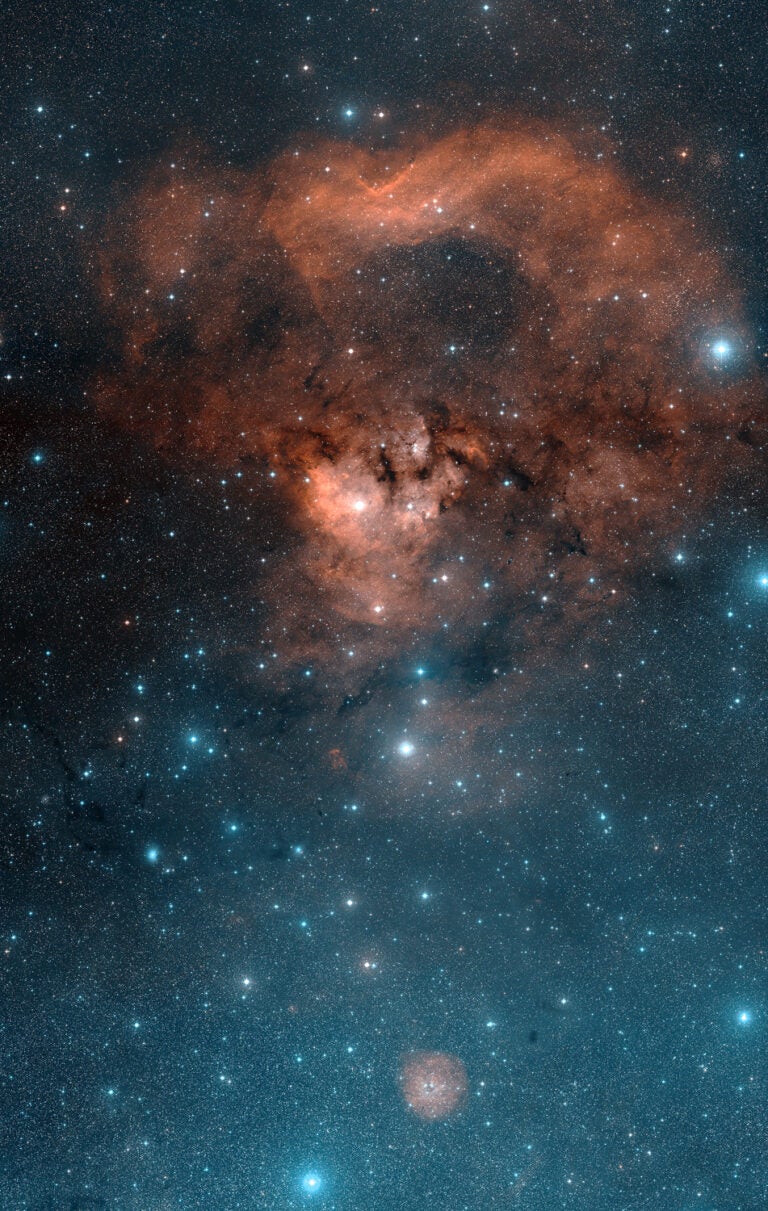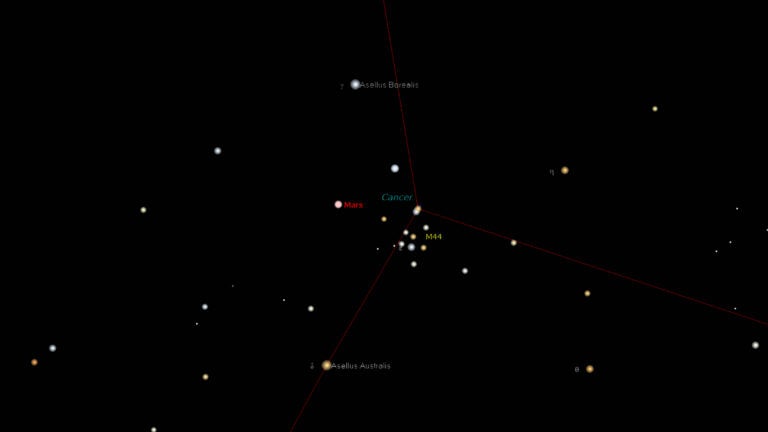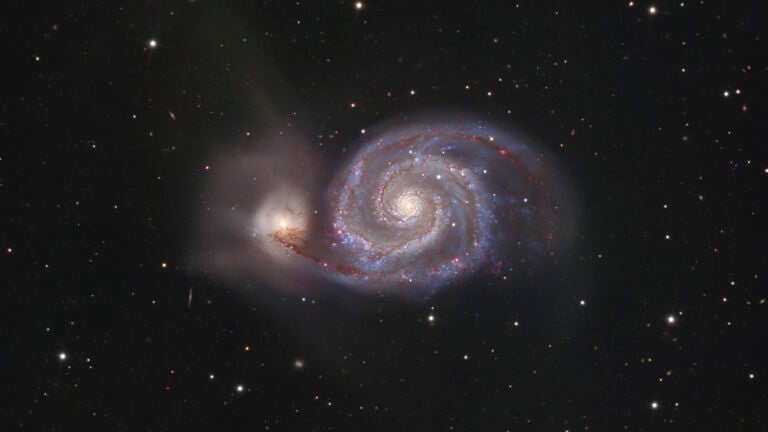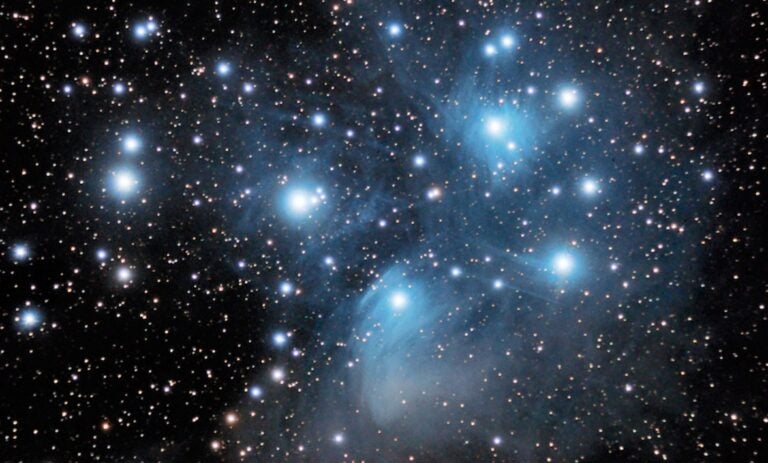This is an ordinary, albeit enormous, nebula — a plain-vanilla cloud of hydrogen, the most abundant element in the universe. Indeed, the name NGC 3324 belongs to a large nebular complex that is merely an outlying segment of another, as it sits northwest of the famous Eta Carinae Nebula (number 23 on our list).

Bringing the universe to your door. We’re excited to announce Astronomy magazine’s new Space and Beyond subscription box – a quarterly adventure, curated with an astronomy-themed collection in every box. Learn More >>.
Fierce emissions and stellar winds from several hot young stars sculpted the patterns in this glowing nebula. A newborn cluster of these massive blue suns lies near enough that its ultraviolet energy ionizes the hydrogen, fluorescing the gas like a neon sign. Darker regions of cooler dust, with towers and strings of denser material, point toward the source of the radiation. These emissions from the nearby hot young stars, along with their winds of subatomic particles, are slowly eroding the “wall” of the structure, producing a curving high-contrast line of dusty gas. It all floats 7,200 light-years away in the constellation Carina.
So far, this rather technical description could apply to any active star-producing nebula like the Eagle (M16) or the Orion (M42), which thickly populate the back alleys of our galaxy like vaporous lemmings. There’s nothing truly unusual here in terms of science or astronomy. The sole reason NGC 3324 makes our list is that, like a Rorschach inkblot, it bears an uncanny resemblance to a human being.
And not just any person. NGC 3324 forms the likeness of Chilean poet Gabriela Mistral, the 1945 recipient of the Nobel Prize for literature. In detailed photos, the eerie resemblance to Mistral’s famous profile has a special resonance for astronomers. After all, numerous heavy-hitter science organizations, like the European Southern Observatory at La Silla and the Carnegie Institution for Science’s Magellan telescope complex atop Las Campanas, sit in the same Chilean region where the poet was born and became famous. Mistral, the first South American to receive a Nobel Prize, hailed from a town just an hour away from these and other major astronomical sites.
To have her face emblazoned in the heavens — in the southern constellation Carina the Keel, part of the classical ship Argo Navis, which sails directly above these state-of-the-art, 21st-century observatories — seems so appropriate that we can perhaps forgive astronomers for psychologically projecting some extra Mistral likeness onto the nebula. You, dear reader, can judge the degree of resemblance between poet and cloud for yourself. In any case, no galaxy, planet, or nebula has ever been named for its resemblance to an actual person, living or deceased. This is the only one.
Thus, this becomes the sole celestial object that calls for a biography.
Called a “verbal genius” and largely self-taught, Mistral helped improve the educational systems of her native Chile and eventually Mexico. Her erudition struck everyone she met, and she was successively appointed as the Chilean consul in cities such as Naples, Lisbon, and Madrid. As her fame spread, she received honorary degrees from universities in Europe and Central America, and she ultimately accepted offers to teach Spanish literature in the United States at Columbia University, Middlebury College, and Vassar College. She lived her last years in Roslyn, New York, and died in 1957 of pancreatic cancer at age 67.
Since NGC 3324 remains the only deep-space object named because of its resemblance to an actual person, let’s conclude with a Gabriela Mistral poem:
The night, it is deserted
from the mountains to the sea.
But I, the one who rocks you,
I am not alone!
The sky, it is deserted
for the moon falls to the sea.
But I, the one who holds you,
I am not alone!
The world, it is deserted.
All flesh is sad you see.
But I, the one who hugs you,
I am not alone!

